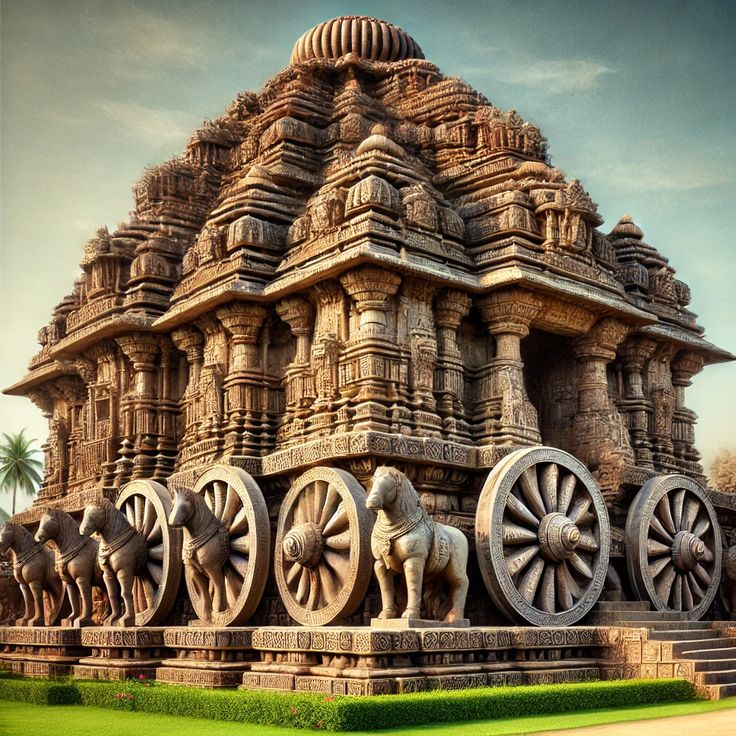KONARK WHEELS INSTALLED AT RASHTRAPATI BHAVAN CULTURAL CENTER
Why in the news?
Four sandstone replicas of the Konark Sun Temple wheels have been installed at Rashtrapati Bhavan to celebrate India’s cultural heritage, blending historical artistry with modern public spaces.
Highlights about the Konark Wheels Installed at Rashtrapati Bhavan:
- New Additions: Four sandstone replicas of the iconic Konark wheels from the 13th-century Konark Sun Temple have been installed at Rashtrapati Bhavan’s Cultural Centre and Amrit Udyan.
- Cultural Initiative: This installation is part of a broader effort to incorporate traditional Indian cultural and historical elements into Rashtrapati Bhavan, celebrating India’s rich heritage.
About the Konark Sun Temple
- Historical Background: Built in the 13th century near Puri in Odisha by King Narasimhadeva I, the Konark Sun Temple symbolises the strength and cultural values of the Eastern Ganga Empire, also known as the Rudhi Gangas or Prachya Gangas, who ruled Kalinga from the 5th to early 15th centuries.
- UNESCO Status: The temple was designated as a UNESCO World Heritage site in 1984, recognizing its architectural and cultural significance within the Odisha school of temple architecture
.source:worldmap
Sundial Functionality:
- Timekeeping: Two wheels track time from sunrise to sunset.
- Spoke Arrangement: Thick spokes mark 3-hour intervals, thin spokes mark 5-hour intervals; beads indicate 3-minute intervals.
- Midnight Marker: Top wider spoke denotes midnight, moving anti-clockwise to measure time accurately.
Architectural Significance of the Temple
- Chariot Shape: The temple is designed as a grand chariot for the Sun God, with 7 horses representing the days of the week and 24 intricately carved wheels symbolising the 24 hours in a day.
- Wheel Design: Each 9-foot-9-inch wheel has 8 thick and 8 thin spokes, functioning as ancient sundials. The rims feature carvings of animals, foliage, and medallions that depict luxurious scenes.
- Symbolism: The 12 pairs of wheels represent the months of the year, with some interpretations linking them to the “Wheel of Life”—symbolising creation, preservation, and realisation.
About Odisha School of Temple Architecture:
- Sub-School: Odisha School is a branch of the Nagara School, part of East Indian temple architecture.
- Key Orders: Architectural features include rekhapida, pidhadeul, and
- khakra styles.
- Location: Major sites are in ancient Kalinga (modern Puri District) like Bhubaneswar, Puri, and Konark.
- Structure: The shikhara (deul) is mostly vertical, curving sharply at the top; preceded by a mandapa (jagamohana).
- Design: Temples are usually square in plan, with ornate exteriors, simple interiors, and often enclosed by boundary walls.





